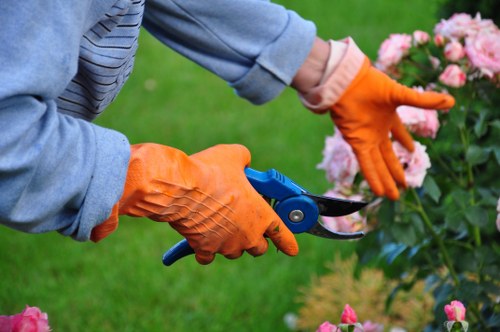Jet Washing Chinatown: Revitalizing Historic Neighborhoods

Jet Washing Chinatown is more than just a cleaning service – it is a transformative process that revives the historic charm and cultural integrity of Chinatown communities. Today, neighborhoods with rich Asian heritage are rediscovering their beauty, thanks to high-pressure cleaning techniques that remove years of grime, pollution, and wear without damaging the essence of these vibrant areas.
Across the country, both residents and business owners are embracing this modern cleaning solution to maintain pristine storefronts, monuments, and community centers. Jet washing not only enhances aesthetic appeal, but also extends the life of building facades, preserving the authenticity of a neighborhood steeped in history.
This article will explore the benefits and techniques of jet washing in Chinatown, highlight the environmental advantages, and detail local relevance while providing insights into nearby areas with vibrant cultural heritages. Our discussion is designed with empathy for the community and seriousness about the importance of preservation.
Understanding the Art of Jet Washing

Jet washing, also referred to as high-pressure cleaning or power washing, uses a stream of water at high velocity to remove dirt, graffiti, and other contaminants from surfaces. This method is particularly useful in densely built urban neighborhoods like Chinatown where pollution and time can take a toll on building exteriors.
How does it work? The process involves specialized equipment that directs water at pressures sufficient to break down layers of contaminants. The technique is efficient, environmentally friendly, and minimizes the need for harsh chemicals.
Local professionals who practice this art have mastered the balance of pressure, distance, and water temperature to ensure that historic materials are not damaged. Their expertise in jet washing Chinatown is a testament to innovation, tradition, and respect for community heritage.
Benefits of Jet Washing in Chinatown

The benefits of jet washing include improved curb appeal, extended building life, and enhanced hygiene. For Chinatowns, where narrow lanes and historical structures are the norm, high-pressure cleaning offers a unique opportunity to restore beauty.
Not only does jet washing remove accumulated dirt and residue, but it also prepares surfaces for any future maintenance or preservation work. It revitalizes the environment and creates a sense of hope and pride among residents and visitors alike.
Eco-friendly practices are key to modern jet washing strategies. With minimal water usage and reduced reliance on chemical solvents, the process matches the community’s sustainable goals and respects the cultural and natural beauty of Chinatown.
Eco-Friendly Cleaning Solutions

Urban environments, especially historic neighborhoods like Chinatown, demand cleaning methods that are safe for both people and the planet. Eco-friendly jet washing uses water conservation techniques and biodegradable cleaning agents, ensuring that no harmful chemicals are left behind.
This approach is vital in densely populated areas where runoff can affect local water supplies. Conserving water while still achieving a thorough clean is critical, and many local contractors adhere to rigorous standards.
Combining modern technology with traditional values, eco-friendly jet washing ensures that Chinatown retains its vibrancy without compromising environmental integrity.
Techniques and Equipment for Effective Jet Washing

Modern jet washing equipment is highly customizable, allowing operators to adjust pressure settings, water temperature, and nozzle types. This customization is especially important in historical areas where structures require gentle care. The balance between effective cleaning and preservation is at the heart of jet washing Chinatown.
Operators often use a combination of continuous stream and pulsatile jets to target stubborn areas while ensuring that delicate surfaces are not harmed. Guidelines and training programs are in place to ensure that each cleaning job is executed with precision and care.
Furthermore, many companies now offer routine maintenance schedules, making it easier for business owners and community leaders to plan regular cleaning without interrupting daily life. Such scheduling not only maintains pristine conditions but also prevents the buildup of harmful substances over time.
Jet Washing Chinatown: A Community Initiative

The push for jet washing in Chinatown is also a community initiative. Local advisory boards, community leaders, and business associations are proactive in seeking out sustainable cleaning solutions. They recognize that enhanced cleanliness boosts tourism, encourages local economic growth, and maintains the cultural integrity of the neighborhood.
Regular cleaning projects have a cascading effect on the community. They not only revive the look of historic districts, but also uplift the spirits of residents, many of whom have a deep emotional connection to their surroundings.
Collaborative projects between private contractors and municipal agencies ensure that jet washing projects are widely adopted. This partnership creates a win-win situation where technical expertise meets community aspirations.
Maintaining Historical Value with Modern Techniques

One of the most significant challenges in cleaning historic neighborhoods like Chinatown is preserving the original materials. Many buildings showcase intricate designs, ornate decorations, and traditional brickwork. Modern jet washing techniques are designed to carefully remove contaminants while honoring these historical details.
The process involves careful planning. Contractors must assess the surface before cleaning and choose appropriate settings that match the building’s specifications. This detail-oriented approach ensures that the cleaning process does not inadvertently damage any original artwork or handwriting carved into stone or wood.
Historic preservation is a priority for both the contractors and the community. With the right techniques, it’s possible to merge the benefits of modern cleaning technology with the need to protect and celebrate historical heritage.
Safety Measures and Community Awareness

Safety is a key consideration during any jet washing project. Operators follow strict guidelines to ensure that bystanders are kept safe, and that no damage occurs to delicate structures. This care is especially important in crowded areas like Chinatown, where public spaces are actively used by residents and tourists.
Educational programs and community meetings often accompany large cleaning projects. These initiatives are designed to build trust and inform the public about the procedures involved, as well as the benefits of maintaining a regularly cleaned environment.
For local business owners and residents, understanding the process helps alleviate any concerns related to noise, water usage, or potential damage. The emphasis on safety and transparency supports a cooperative relationship between service providers and the communities they serve.
Local Relevance: Exploring Nearby Areas

Chinatown’s jet washing services often extend beyond a single community. The concept has resonated in several nearby areas, each with its unique charm and community focus. Here we explore 12 neighboring areas where similar initiatives and cultural revitalization efforts are taking place:
- San Francisco Chinatown: Known for its bustling street markets and iconic architecture, San Francisco Chinatown benefits from regular jet washing that keeps its historic facades vibrant.
- Los Angeles Chinatown: Nestled in the heart of LA, this Chinatown features modern cultural influences alongside traditional elements, making high-pressure cleaning essential for maintaining balance.
- New York Chinatown: One of the largest in the country, New York’s vibrant community settings require careful cleaning that respects dense urban structures and heavy foot traffic areas.
- Boston Chinatown: With its blend of historic architecture and Asian cultural spots, Boston Chinatown uses jet washing to combat pollution and urban wear while celebrating its history.
- Chicago Chinatown: Featuring a mix of modern and traditional designs, Chicago’s Chinatown has embraced jet washing to prepare for its active cultural events and festivals.
- Philadelphia Chinatown: This area is renowned for its community spirit, and regular high-pressure cleaning sessions help maintain clean streets that welcome both tourists and locals.
- Houston Chinatown: With rapid urban growth, Houston’s Chinatown requires jet washing to restore and maintain the visual heritage of a community in transition.
- Seattle Chinatown-International District: Blending history with a modern energy, this area benefits greatly from routine cleaning services that merge functionality with tradition.
- Vancouver Chinatown: Rich with cultural significance, Vancouver Chinatown’s commitment to regular jet washing preserves its historical sites against the effects of time and weather.
- San Diego Chinatown: This compact area is celebrated for its vibrant festivals and delicious cuisine; well-maintained streets are a crucial aspect of its community pride.
- Newark Chinatown: A smaller yet passionate community, Newark’s Chinatown uses targeted jet washing to revitalize its public spaces after years of urban wear.
- Montreal Chinatown: Known for its unique blend of North American and Asian influences, Montreal’s Chinatown is emerging as a model for sustainable cleaning practices.
Each of these areas is close to Chinatown and benefits from enhanced cleaning techniques that keep the community lively, safe, and attractive to both locals and visitors. Jet washing plays a critical role in ensuring that these places remain symbols of cultural pride and resilience.
The Future of Jet Washing in Chinatown

The evolution of jet washing technology is an ongoing journey that constantly seeks to harmonize efficiency with environmental and historical sensitivity. Future innovations will likely include even more precise equipment, automation that minimizes human error, and eco-friendly methods that further reduce water consumption while maximizing cleaning power.
Local governments and community organizations are considering policies that integrate jet washing into routine urban maintenance schedules. Such commitments would ensure that historical areas like Chinatown remain well-preserved for generations to come.
As the community begins to appreciate the tangible benefits of these techniques, more operators are adopting best practices from international standards. The future is promising – imbued with a vision to balance modern technology with cultural heritage in a sustainable way.
Best Practices for Homeowners and Business Owners

For those who manage properties in and around Chinatown, understanding the nuances of jet washing can make all the difference. Here are several best practices to ensure safe and effective cleaning:
- Schedule Regular Maintenance: Ensuring periodic cleaning prevents the buildup of contaminants that could damage surfaces over time.
- Choose Licensed Professionals: Always opt for experienced technicians who know the ins and outs of cleaning historical structures.
- Discuss Your Needs: Be clear about the specific requirements of your property, including any delicate features that need special care.
- Monitor Environmental Impact: Ensure that cleaning methods comply with local environmental regulations to reduce pollution.
- Stay Informed: Educate yourself about the latest advances in jet washing technology and eco-friendly practices.
These tips ensure that both homeowners and business owners in Chinatown can enjoy a clean, safe, and historically sensitive environment.
Combining technology with tradition, the growing trend of jet washing in Chinatown has much to offer in terms of urban renewal and community pride.
Innovative Approaches in Jet Washing

Technological innovation has led to the development of advanced nozzles and precision tools designed specifically for delicate surfaces. Contractors now use thermal imaging and surface sensors to determine the optimal water pressure for each cleaning task. This careful calibration means that even the most intricate facades in Chinatown are preserved during the cleaning process.
Moreover, some companies are integrating renewable energy sources to power these machines, further reducing the carbon footprint associated with maintenance work. The spirit of innovation in jet washing is one that upholds both efficiency and environmental responsibility.
Innovative techniques are especially crucial in settings where historical value and environmental concerns converge, offering solutions that are both practical and respectful to the community’s legacy.
Community Impact and Economic Benefits

The impact of jet washing extends far beyond aesthetics. Clean neighborhoods have been shown to boost local economies, as improved appearances attract more customers to local shops and restaurants. In many parts of Chinatown, revitalized storefronts have sparked an increase in tourism and community events.
Residents feel a renewed sense of pride in their community, as the visible transformation of public spaces fosters social cohesion and an improved quality of life. Small businesses, which form the backbone of Chinatown’s economy, especially benefit from improved visibility and a cleaner working environment.
By investing in regular cleaning, communities are making a statement: that they value their heritage and are committed to preserving it for future generations. The economic and social uplift provided by jet washing is a powerful example of how modern technology can serve traditional communities.
Frequently Asked Questions (FAQs)
Q1: What is jet washing and how does it work in Chinatown?
A1: Jet washing, also known as high-pressure or power washing, uses a concentrated stream of water to remove dirt, mold, and grime from surfaces. In Chinatown, this technology is used to clean historical buildings and public spaces while preserving cultural integrity.
Q2: Is jet washing safe for historical structures?
A2: Yes, when performed by experienced professionals, jet washing is safe for historical structures. Specialists carefully adjust the water pressure and nozzle type to protect delicate surfaces.
Q3: How does eco-friendly jet washing benefit communities?
A3: Eco-friendly jet washing uses less water and avoids harmful chemicals, reducing environmental impact. This method ensures that the cleaning process supports sustainability while effectively modernizing the appearance of old neighborhoods.
Q4: What nearby areas also benefit from jet washing services?
A4: Several nearby communities such as San Francisco Chinatown, Los Angeles Chinatown, New York Chinatown, and Boston Chinatown also benefit. These areas use jet washing to overcome urban pollution, rejuvenate storefronts, and maintain their historical appeal.
Q5: Can regular jet washing improve property values in Chinatown?
A5: Absolutely. Regular jet washing improves the overall aesthetics and structural integrity of properties, potentially leading to higher property values and greater community investment.
Final Thoughts: Preserving Heritage with Modernity
The marriage of traditional architectural beauty with modern technology is an inspiring path forward for Chinatown and similar communities. Jet washing stands as a beacon of progress that respects history while offering a practical solution to everyday urban challenges.
As neighborhood leaders and residents continue to work together, the benefits of routine, environmentally safe jet washing will only become more apparent. The future of Chinatown is bright – marked by cleaner spaces, a renewed sense of pride, and an unwavering respect for heritage.
In a constantly evolving urban landscape, preserving cultural landmarks and enhancing community environments are more than just maintenance tasks; they are acts of communal love and dedication. Jet washing represents this commitment perfectly, combining technical expertise with heartfelt community care.